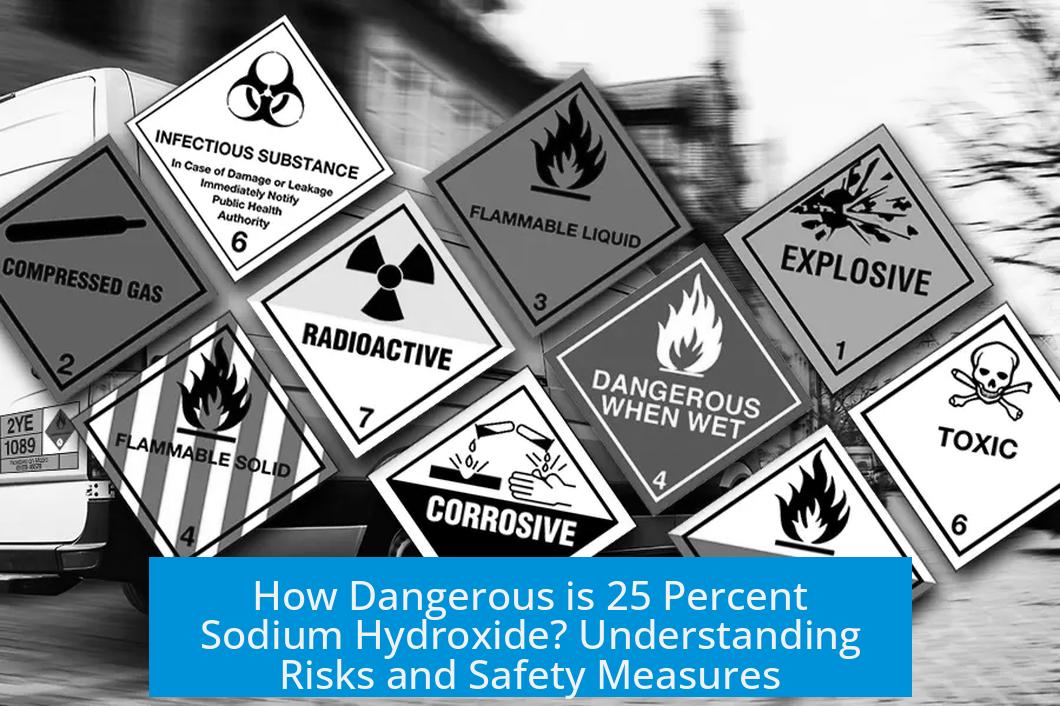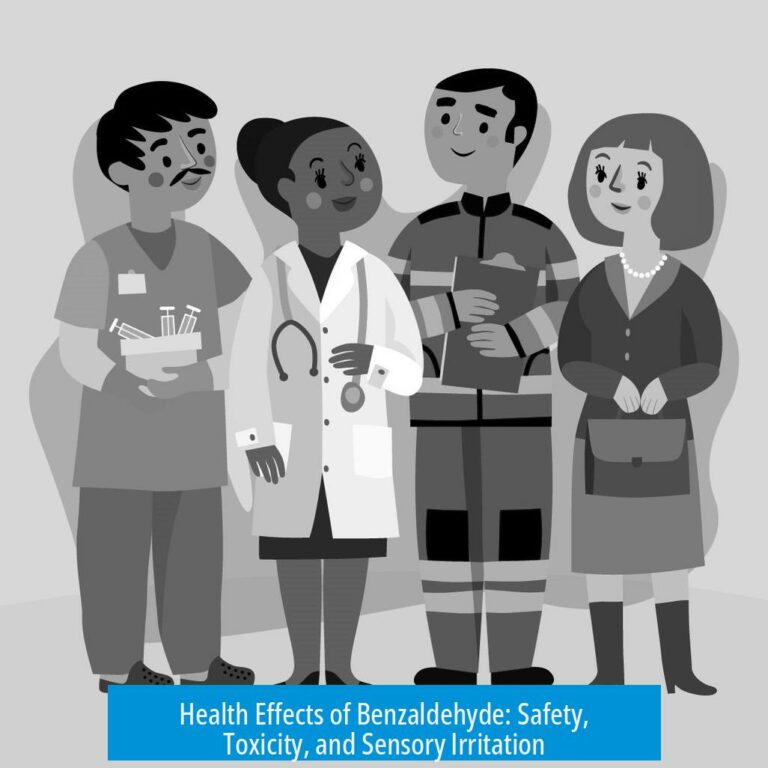How Dangerous Is 25 Percent Sodium Hydroxide?
25 percent sodium hydroxide (NaOH) solution is highly corrosive but not toxic or flammable. It poses significant danger mainly through contact with eyes and skin. Eye exposure can cause severe, rapid damage, while skin contact may cause burns if not promptly washed off. Handling requires strict protective measures, especially eye protection, and immediate decontamination after exposure.
General Nature and Concentration
A 25% sodium hydroxide solution corresponds to about 6 molar (6M) concentration. This strength is typical for some household caustic products, such as drain cleaners, and soap-making hobby kits. Despite this, it is not exotic or especially rare in chemical or domestic use.
The solution does not have systemic toxicity but is strongly corrosive. It can damage living tissue on contact but does not present chemical toxicity in the traditional sense. It is a stable, non-flammable aqueous solution.
Corrosive Effects and Physical Damage
Eye Contact
Sodium hydroxide at 25% concentration poses an immediate hazard to eyes. Contact with the solution can cause severe burns that develop in seconds. Even very dilute solutions (~0.1M) can cause blindness quickly.
Exposure leads to chemical burns of the cornea and conjunctiva. There is no such thing as a minor eye burn from NaOH; any contact is potentially serious. However, damage can be mitigated if the eyes are flushed thoroughly and immediately with running water.
- Wearing goggles or other eye protection is essential when handling or working near this chemical.
- If splashed in the eyes, continuous flushing with water must begin immediately.
Skin Contact
While skin contact is less rapidly harmful than eye contact, it still causes corrosive injury. The solution hydrolyzes skin fats to form soap, which results in a slippery or soapy feeling on contact. Delayed pain and burns can develop within hours after exposure.
Symptoms include whitening of the skin at the contact site and possible burns developing after several hours. Even if skin feels fine at first, warming or itching may appear later.
- Immediate and aggressive washing with copious cold water reduces burn severity.
- Prolonged or repeated exposure can lead to permanent scarring.
- Unbroken skin offers some protection, but weak or damaged skin is more vulnerable.
Other Contact Types
Inhalation of vapors or ingestion could cause harm, but sodium hydroxide solutions like 25% do not readily vaporize or emit toxic gases. There are occasional incidents of accidental face splashes, which generally cause irritation and redness but no severe burns if flushed quickly.
Chemical Stability and External Hazards
This sodium hydroxide solution is chemically stable. It neither burns nor explodes. It does not emit toxic gases under normal conditions. The main risk lies in direct tissue contact rather than environmental or fire-related hazards.
Should a container spill, the caustic liquid may damage surfaces, such as paint, but it only presents serious hazards upon physical contact with humans.
Safety Recommendations and Precautions
Personal Protective Equipment (PPE)
- Always wear splash-resistant goggles or full-face shields when near open containers.
- Gloves resistant to alkali corrosion, long sleeves, and aprons reduce skin exposure.
- Avoid direct skin contact and do not eat, drink, or smoke near sodium hydroxide.
Handling and Emergency Response
- Work in well-ventilated areas, preferably with safety showers and eye wash stations accessible.
- If contact occurs, immediately flush the affected area with large amounts of cold water for at least 15 minutes.
- Do not delay washing until pain or irritation appears; chemical burns may be painless initially.
- If spills occur, restrict area access until cleaned properly.
Summary of Danger Level
| Exposure Type | Risk Level | Comments |
|---|---|---|
| Eye Contact | Severe | Potential permanent damage in seconds; requires immediate irrigation. |
| Skin Contact | Moderate to Severe | Delayed burns possible; rapid washing reduces severity. |
| Inhalation | Low | Minimal vapor generation at room temperature; irritation unlikely. |
| Environmental/Hazardous Reaction | Low | Non-flammable, stable, no toxic gas release. |
Important Points for Safe Use
- 25% sodium hydroxide is widely used in industry and domestic settings. It is not inherently exotic or unusual.
- Its main hazard is strong corrosive damage to living tissues.
- Eye protection is critical due to the risk of instant and serious injury.
- Skin burns develop slowly, so immediate washing is essential.
- The solution is chemically stable and does not present fire or explosion hazards.
- Using personal protective equipment and handling with care virtually eliminates the risks.
Key Takeaways
- 25% sodium hydroxide is corrosive but neither toxic nor flammable.
- Eye contact causes rapid and severe damage; always wear goggles.
- Skin exposure causes delayed burns; wash off immediately with water.
- The chemical is stable and safe if handled with standard precautions.
- Use PPE, work safely, and wash promptly to prevent injuries.
Is 25 percent sodium hydroxide dangerous to skin contact?
It can cause burns if not washed off quickly. The skin might feel soapy as the chemical reacts with oils to form soap. Immediate thorough rinsing with water helps reduce damage. Delayed burns may still occur without proper washing.
How harmful is 25 percent sodium hydroxide if it gets in the eyes?
Eye contact is very dangerous and can cause permanent damage within seconds. Even low concentrations can blind you quickly. Wearing splash-resistant goggles is essential when handling it.
Can 25 percent sodium hydroxide cause toxic effects or fire hazards?
No, this solution is not toxic and not flammable. It doesn’t produce toxic gases or build pressure. The main risks come from its corrosive nature, especially on the skin and eyes.
What safety measures should be followed when handling 25 percent sodium hydroxide?
Wear splash-resistant goggles and gloves. If it spills on skin or eyes, wash immediately with plenty of water. Report leaks and avoid stepping in spills. Use common sense and PPE to prevent injury.
Is 25 percent sodium hydroxide safe for home use, like soap making?
Yes, it’s about the same concentration as used in soap making. It’s safe if handled carefully with proper PPE and rinsed promptly if contact occurs. Treat it with respect to avoid burns or eye injury.





Leave a Comment